The Kungsleden, or "King's Trail" in French, is a must-see trekking destination for Arctic adventure enthusiasts. Located in Swedish Lapland, this trail offers a unique experience of snowshoeing or Nordic skiing through snow-covered landscapes. This article will provide you with all the details you need to plan your hike on the Kungsleden during the winter months.
Kungsleden, where the wild beat is pure
What is Kungsleden?
The Kungsleden is a 440-kilometre hiking trail that crosses northern Sweden, offering spectacular views of mountains, forests and frozen rivers. The northern section, which is the most travelled, comprises 5 stages:
| Stage 1 | Abisko - Abiskojaure | 3h30 | 13 kilometres | +105 m |
| Stage 2 | Abiskojaure - Alesjaure | 6h | 22 km | +330 m / -40 m |
| Stage 3 | Alesjaure - Sälka | 8h | 25 km | +370 m / -300 m |
| Stage 4 | Sälka - Kaitumjaure | 6h | 25 km | +150 m / -250 m |
| Stage 5 | Kaitumjaure - Vakkotavare | 7h | 22 km | +600 m ; -780 m |
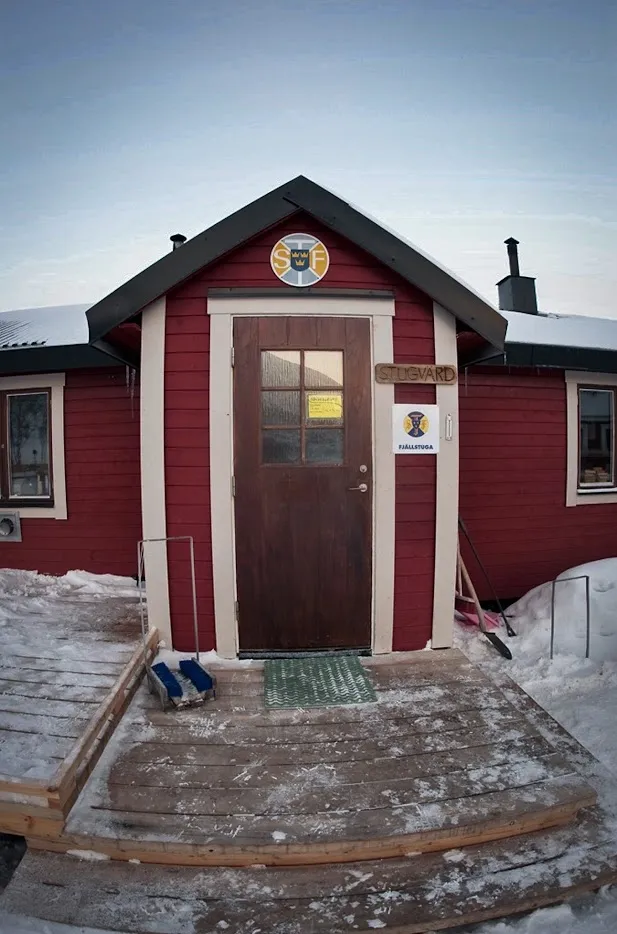
Some refuges have a small grocery shop where you can buy food, drinks and sometimes camping equipment. The refuges are equipped with a wood-burning stove to keep you warm, a communal kitchen, dormitories with bunk beds and an emergency telephone, due to the absence of a mobile network in this region.
Most of the refuges have no electricity or running water, so you have to melt the snow to get water. They also have dry toilets.
Why choose Kungsleden in winter?
Exploring Kungsleden in winter is a particularly magical experience. The snow-covered landscapes, the silence of winter nature and the chance to see the Northern Lights make this adventure unique. Kungsleden is particularly popular during the summer months. Swedes from all over the world flock to this legendary hike.
Doing the Kungsleden in winter is:
- A real expedition during which you won't meet many hikers.
- White valleys as far as the eye can see, immersing you in the beauty of Lapland.
- The Northern Lights dancing high above your head.
- Your gear can be pulled along in a pulka, so you don't have a bag to carry.
- A snowshoeing or Nordic skiing activity that's out of the ordinary.
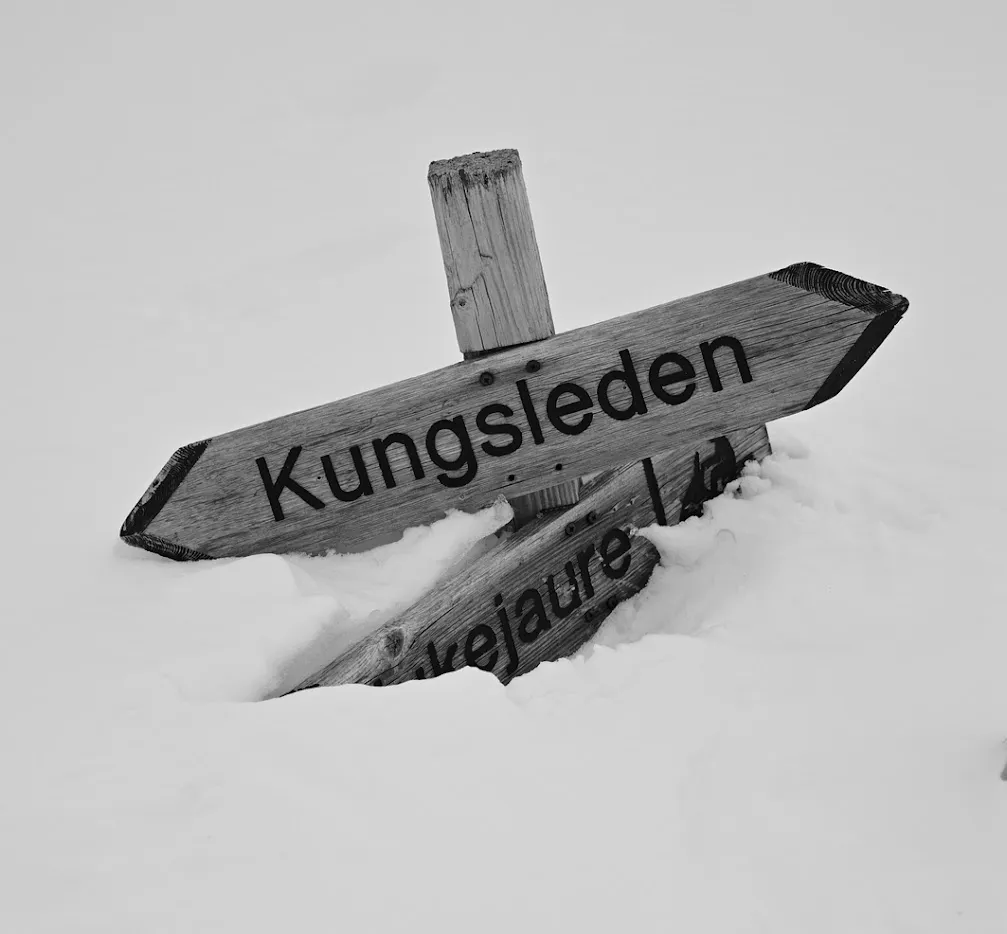
Planning your Kungsleden trek
Essential equipment for winter trekking
Getting your equipment right is crucial to enjoying Kungsleden in winter. You'll need warm clothes, sturdy hiking boots, snowshoes or skis, and of course a sleeping bag suitable for extreme temperatures.
You'll find our complete , structured list of everything you need to pack here .
The best times to go
The ideal months for hiking Kungsleden in winter are February to April, when the days start to get longer and the temperatures remain manageable.
Detailed itinerary for Kungsleden in winter
Key sections of Kungsleden in winter
The Kungsleden trail stretches nearly 440 km from Abisko in the north to Hemavan in the south, but during winter, the northern section between Abisko and Vakkotavare is the most popular and accessible. This portion offers full immersion in the Swedish Lapland, while being well-supported with STF mountain huts and winter trail markings.
Each section of the trail is unique, showcasing a variety of landscapes, from pristine glacial valleys and exposed plateaus to long frozen lakes where you’ll travel by snowshoes or nordic skis.
Here are some highlights of each section:
- Abisko to Abiskojaure: A short and gentle start to help you acclimatize. You’ll follow a frozen river through snow-covered forests.
- Abiskojaure to Alesjaure: A scenic stretch across wide plateaus, opening up stunning views of the surrounding mountains. One of the most photogenic parts of the route.
- Alesjaure to Sälka: The heart of the Kungsleden, featuring wild alpine landscapes. You’ll pass close to Mount Kebnekaise, Sweden’s highest peak.
- Sälka to Kaitumjaure: A remote, wind-swept valley offering a strong sense of polar solitude and silence.
- Kaitumjaure to Vakkotavare: The most physically demanding section, with significant elevation changes, ending with a majestic arrival at the shores of Lake Akkajaure.
Each stage is punctuated by STF-managed mountain huts, well-equipped to handle the challenges of Arctic winter. Along the way, you may encounter semi-wild reindeer, spot traces of the Sami people, or warm up inside a traditional wood-heated cabin deep in the wilderness.
This breakdown into stages makes it easy to tailor your journey based on your experience and goals, all while enjoying a safe and awe-inspiring Arctic adventure.
Viewpoints and sites not to be missed
Along the way, be sure to visit Abisko National Park, Mount Kebnekaise (Sweden's highest peak), and the many mountain huts where you can warm up and meet other hikers.
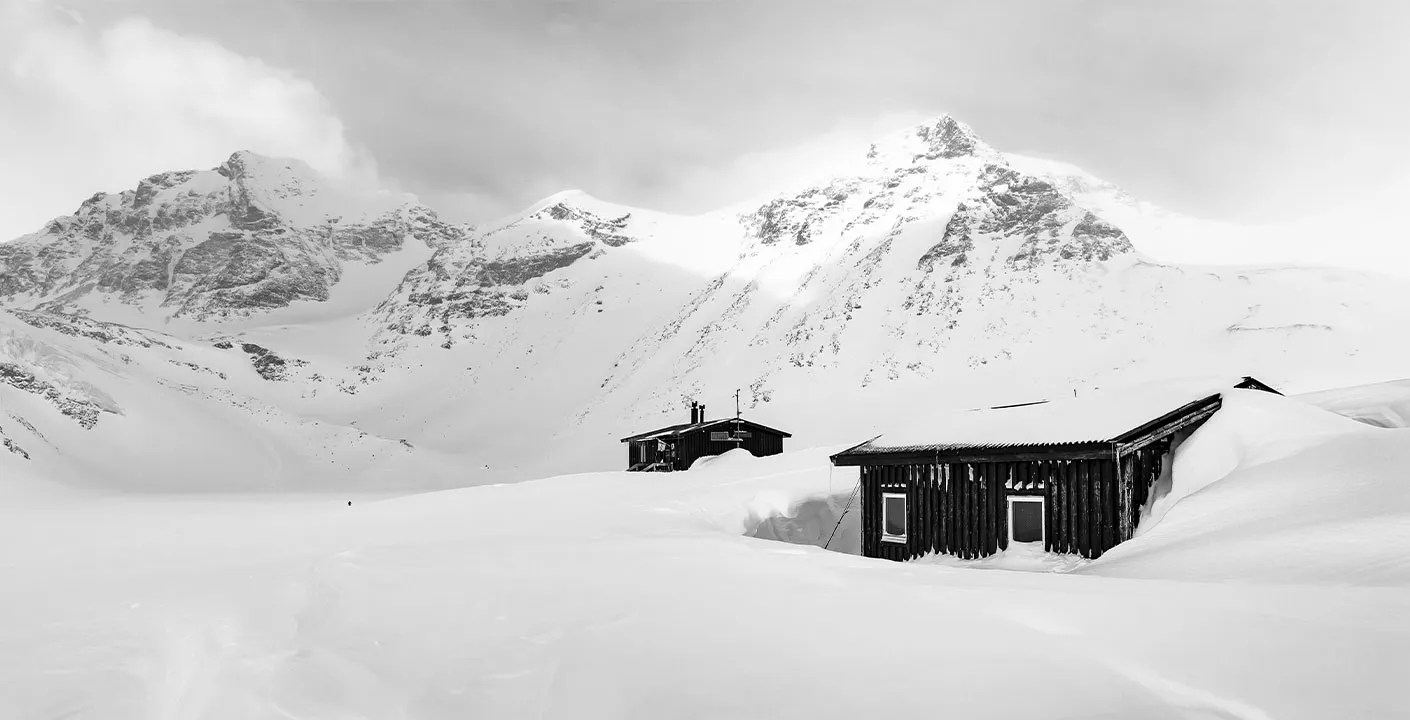
Winter survival tips
Prepare for extreme weather conditions
The weather in Lapland can be unpredictable and severe. It's essential to check the weather forecast regularly and be prepared for conditions that may include heavy snowfalls and sub-zero temperatures.
Safety and orientation on the snowy trail
Kungsleden's well-marked winter trails are maintained by the Swedish Tourist Association (STF). However, a compass and a detailed map are essential for safe navigation.
Unique experiences on Kungsleden
Encounters with Arctic flora and fauna
Exploring the Kungsleden in winter also means diving into a unique ecosystem, typical of the far north of Sweden. Despite the extreme conditions, Arctic wildlife has adapted remarkably to this harsh climate, offering observant trekkers unforgettable encounters.
Along the way, you might spot:
- Reindeer, often moving in herds, belonging to the Sami people. They are ever-present in the region and sometimes cross right over the trail.
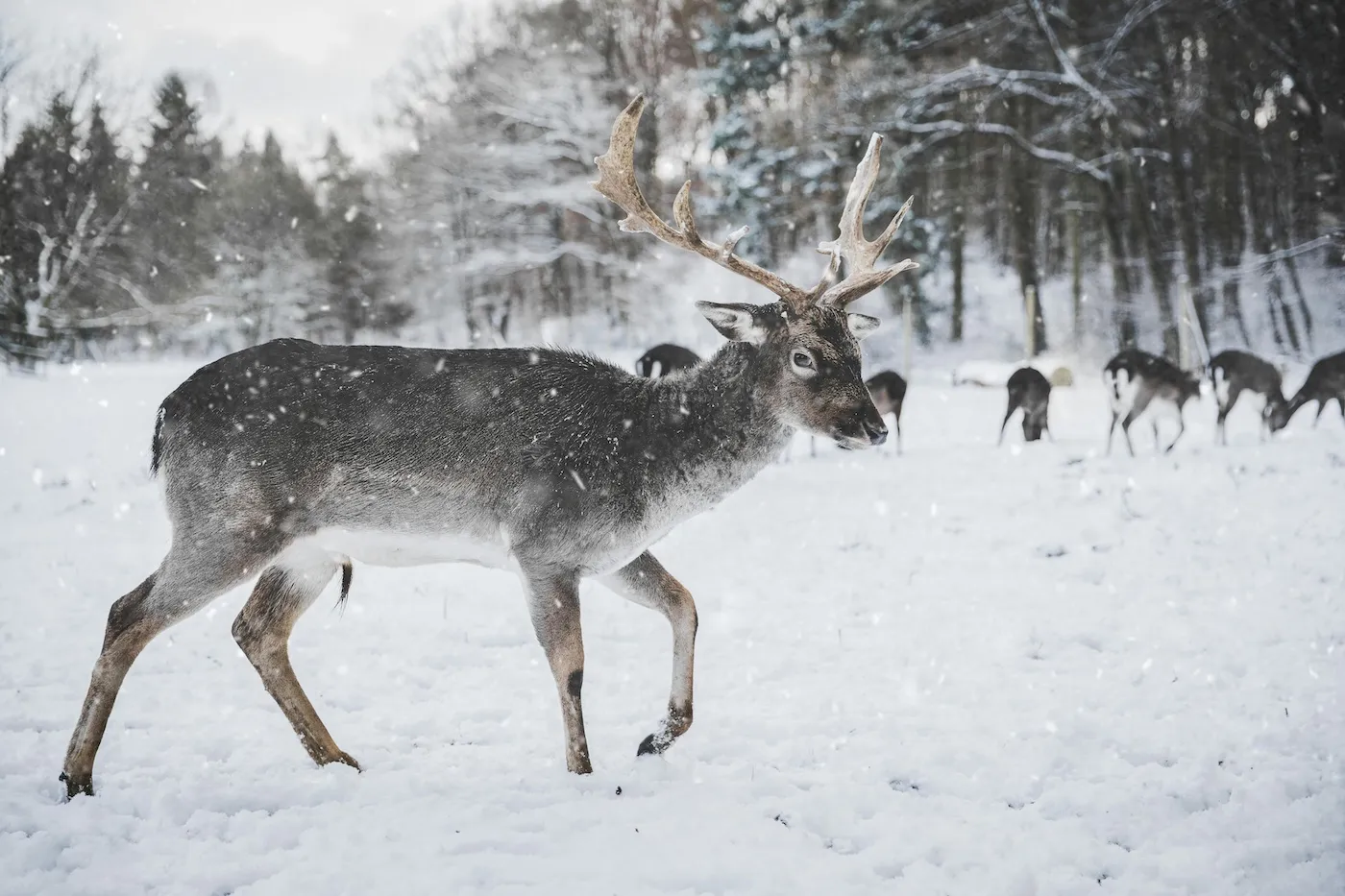
- Arctic foxes, well-camouflaged in the snow with their thick white winter coats.

- Rock ptarmigans, also known as snow grouse, whose plumage changes with the seasons to blend into the landscape.
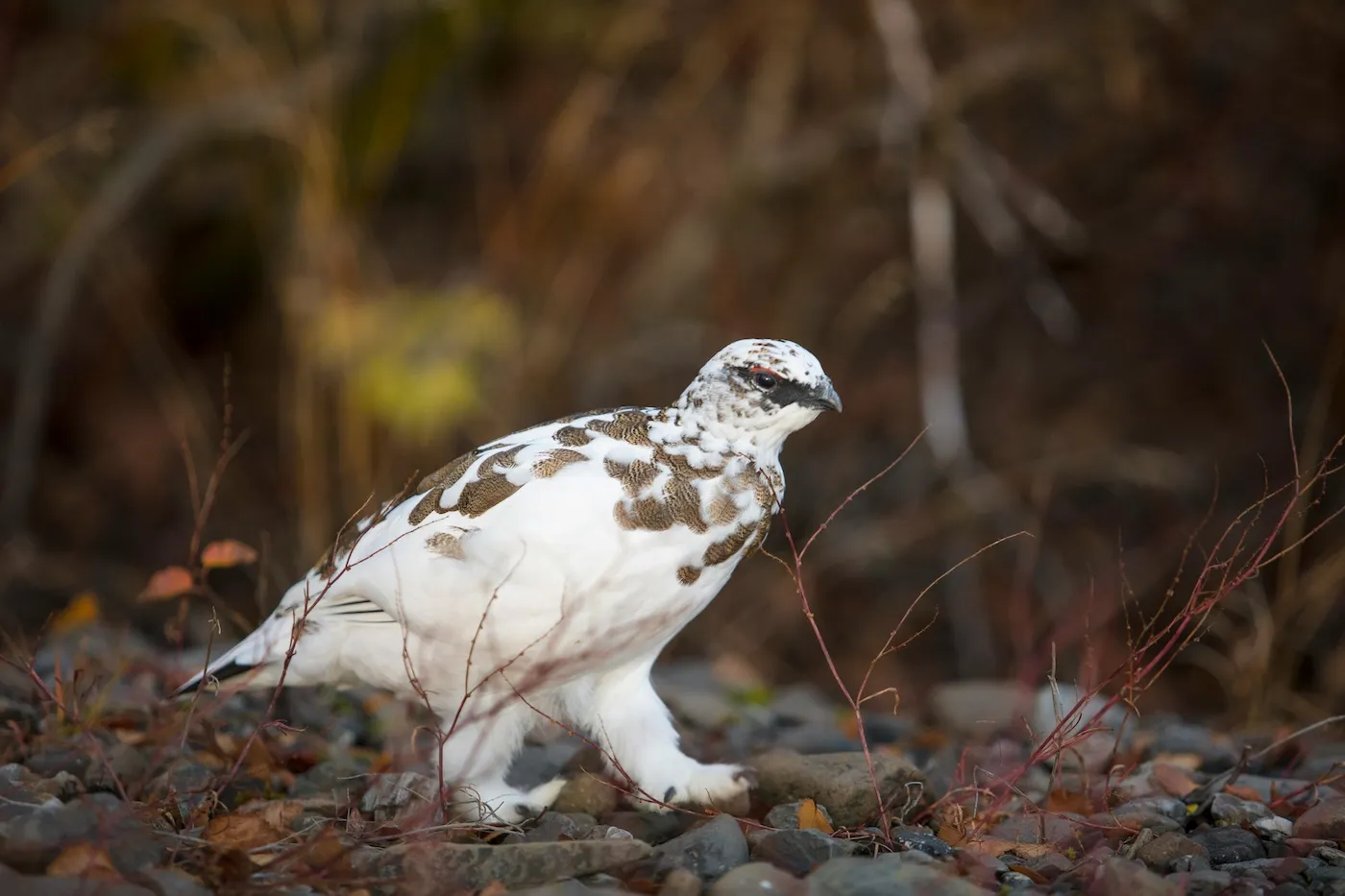
- And if you're lucky, you may come across tracks of a moose or even a wolverine. Elusive, but present in the area.
On the flora side, while winter freezes the landscape, signs of life still peek through:
- Dwarf birch trees, characteristic of the Arctic tundra.
- Lichens and mosses, vital for reindeer nourishment during the cold months.
- And if you return in spring, a burst of alpine flowers will emerge as soon as the snow melts.
This raw, silent, and untouched nature gives the Kungsleden its almost otherworldly atmosphere. Every step is an immersion in a world where humans have left few traces, enhancing the feeling of freedom and reconnection with the essentials.
Don’t forget: always respect wildlife by keeping your distance, and follow the principles of responsible trekking in Arctic environments.
The Northern Lights: an unforgettable natural spectacle
Kungsleden is one of the best places in the world to observe the Northern Lights, offering dazzling natural spectacles on clear nights.
To find out more about Kungsleden and for detailed advice on how to prepare for your trek, visit the Swedish Tourist Association . For more information and guides to other hiking destinations, visit Wildhartt.com .
Finally, you can go on an expedition along the Kungsleden trail, either trekking in summer or snowshoeing in winter with Wildhartt. Authenticity and adventure guaranteed, all with the support of a high-quality guide. Discover the rest of our expeditions in Lapland on our website.






